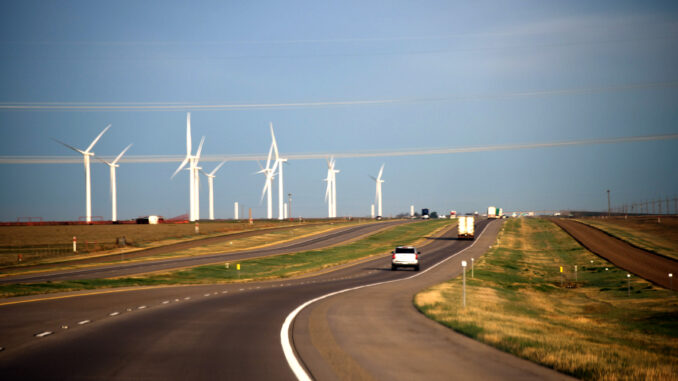
All over the world, consumers are being slammed by soaring energy prices. In Australia, the wholesale cost of electricity jumped by 141 percent in the first three months of 2022. In Britain, residential customers are paying about 43 percent more for their household energy than they were last year, and prices are expected to jump another 65 percent in October. And here in the U.S., we’re paying close to $5 a gallon—for the first time in generations. That’s thanks in no small part to the Biden administration, which has restricted oil and gas drilling while continually promoting renewable energy. Among the most recent moves: a pledge to deploy 30,000 megawatts of offshore wind by 2030.
Pushing for offshore wind—one of the most expensive forms of electricity production—may please some of Biden’s supporters, but the latest evidence shows that investing too much in wind energy is terrible for grid reliability, as well as bad for consumers.
Consider the case of Texas. Last month, renewable boosters in the state were crowing about how renewables were “bailing out” the Texas power grid. Yet those boosters have been silent lately. Why? Over the past few days, as temperatures have soared to over 100 degrees and electricity use in Texas has been setting new records, ERCOT, the state’s grid operator, has been asking residents to use less power.
Texas doesn’t have enough juice because at the same time that power demand is soaring, output from the 35,000 megawatts of wind capacity in the state has been falling to near zero.
According to data published by ERCOT, on both July 10 and July 11, at about 1 pm, when power demand was rising dramatically, the output from all of that wind capacity was only about 1,000 megawatts or roughly 3 percent of its potential output. The wind energy was just… disappearing.
Wind energy’s disappearing act is a recurring problem in Texas. During Winter Storm Uri in February 2021, as the state’s electric grid was on the verge of collapse, the output from the state’s wind sector plummeted. As Ed Crooks of the consulting firm Wood Mackenzie noted last December, the long-term significance of the Texas crisis” is “directly connected to renewable energy. The worst of the problems hit during an extended ‘wind drought’ with low wind speeds and power output across a vast area of the U.S.”
When it comes to hot climates like Texas, the times when you need the most energy are also going to be the times when you have the least wind. Wind energy is a losing proposition—especially given that due to population growth and a booming industrial sector, electricity demand in Texas is growing faster than in any other state. And yet, the ERCOT grid isn’t adding enough dispatchable generation capacity to meet demand. Instead, it has been inundated with heavily subsidized wind and solar. That has made the state’s grid far more reliant on weather-dependent renewables.
Wind energy’s vanishing act isn’t a secret. Back in 2011, in a piece for National Review, I pointed out that during an August heat wave, output from the state’s wind turbines was just 1,500 megawatts, or 15 percent of what the state was using. I found that there were three days on which wind energy was able to contribute a scant 1 percent of total demand.
Texas isn’t alone. Dramatic swings in wind energy output are wreaking havoc on the German electric grid, too. Last December, Reuters reported that Europe’s largest wind producers were experiencing similar problems—especially Germany. And this week, Bloomberg reported that German electricity prices had more than doubled due to calm winds and reduced flows of natural gas from Russia.
“Wind power output in Europe’s biggest power market peaked at 8,242 megawatts at midnight and is poised to fall to about 2,000 megawatts on Tuesday,” per Bloomberg.
Source: Newsweek.com



